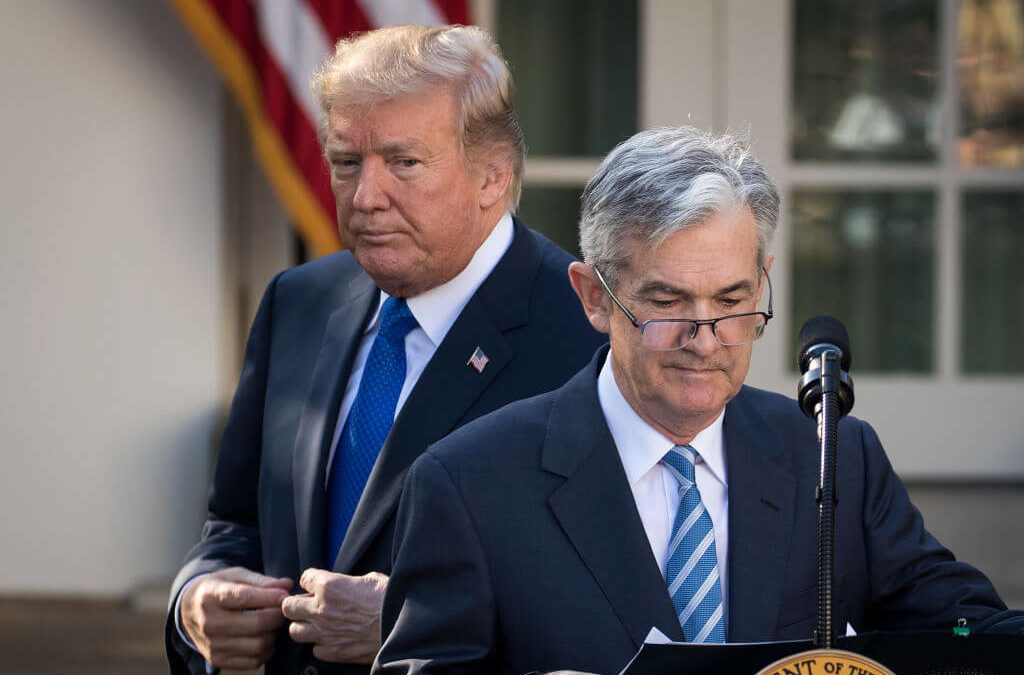President Donald Trump continued his assault on the Federal Reserve and Chair Jerome Powell on Monday, once again calling for an interest rate cut as high as a full 1%, and he said the central bank should resume quantitative easing.
Quantitative easing, or QE, is a recession-era monetary policy whereby a central bank stimulates through the purchase of government bonds, pumping more money directly into the economy. It’s generally only used when interest rates are already at or near zero, and there is low inflation.
Trump again went after Powell and his “horrendous lack of vision” in a pair of tweets Monday.
“Our Economy is very strong, despite the horrendous lack of vision by Jay Powell and the Fed, but the Democrats are trying to ‘will’ the Economy to be bad for purposes of the 2020 Election. Very Selfish!” Trump tweeted. “Our dollar is so strong that it is sadly hurting other parts of the world. The Fed Rate, over a fairly short period of time, should be reduced by at least 100 basis points, with perhaps some quantitative easing as well. If that happened, our Economy would be even better, and the World Economy would be greatly and quickly enhanced-good for everyone!”
Trump has been criticizing the Fed for months now and has made it crystal clear that he wants lower interest rates and a weaker dollar so the U.S. would be more in line with what other countries around the world are doing.
The Fed cut interest rates in July for the first time since 2008, but it was only a quarter-point cut. In a speech at the time, Powell called the cut a “mid-cycle adjustment,” leading to fears that there wouldn’t be any more rate cuts coming.
In attacking the Fed, which is supposed to be free of political intervention and influence, Trump has claimed the Dow Jones would be 10,000 points higher and the economy growing faster than 4% GDP if not for the way it raised rates in 2018 while also cutting its balance sheet, known as Quantitative Tightening.
Markets are currently pricing in another 0.25-rate cut during its upcoming September meeting, and likely another cut before the end of the year.




